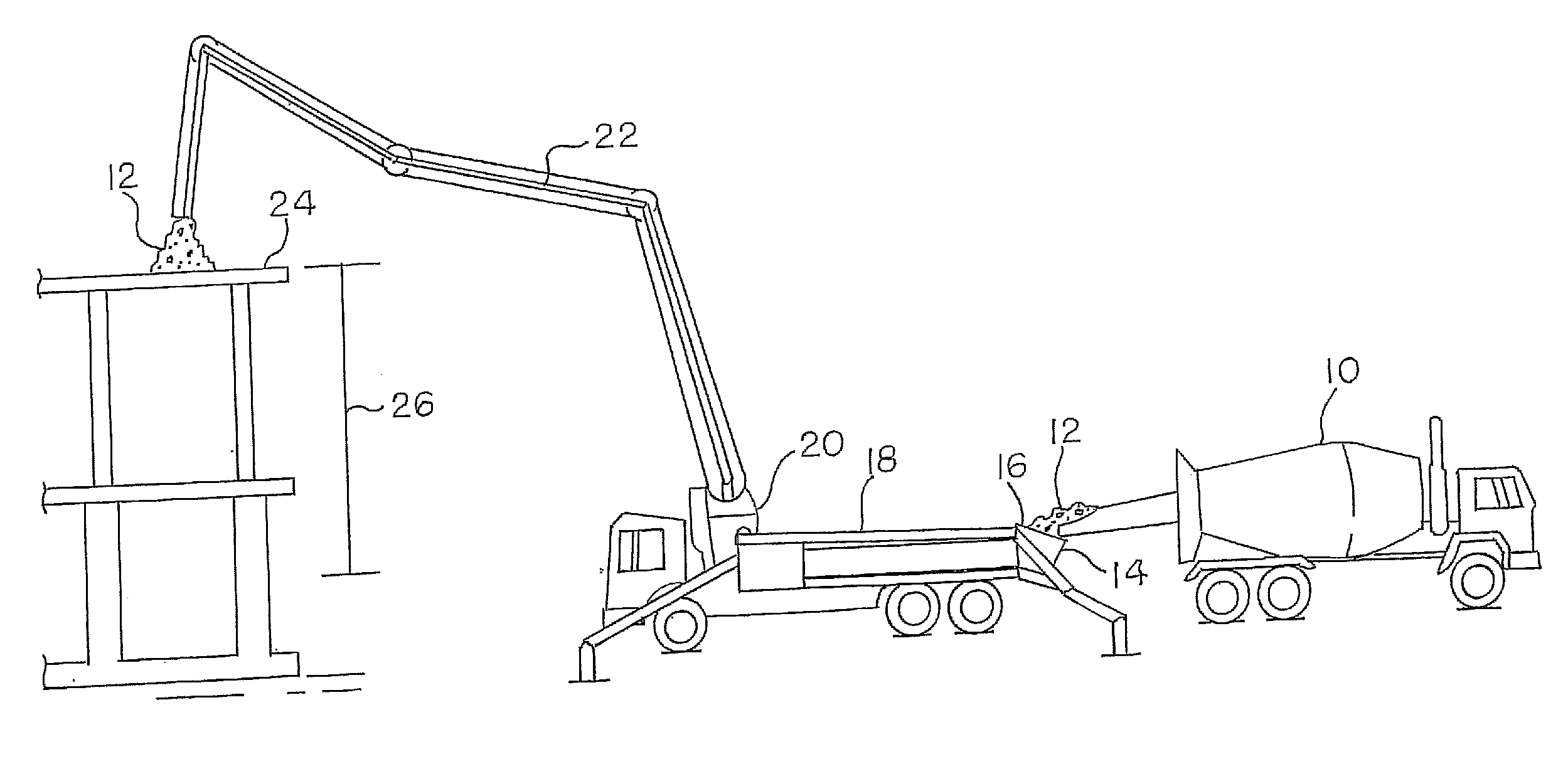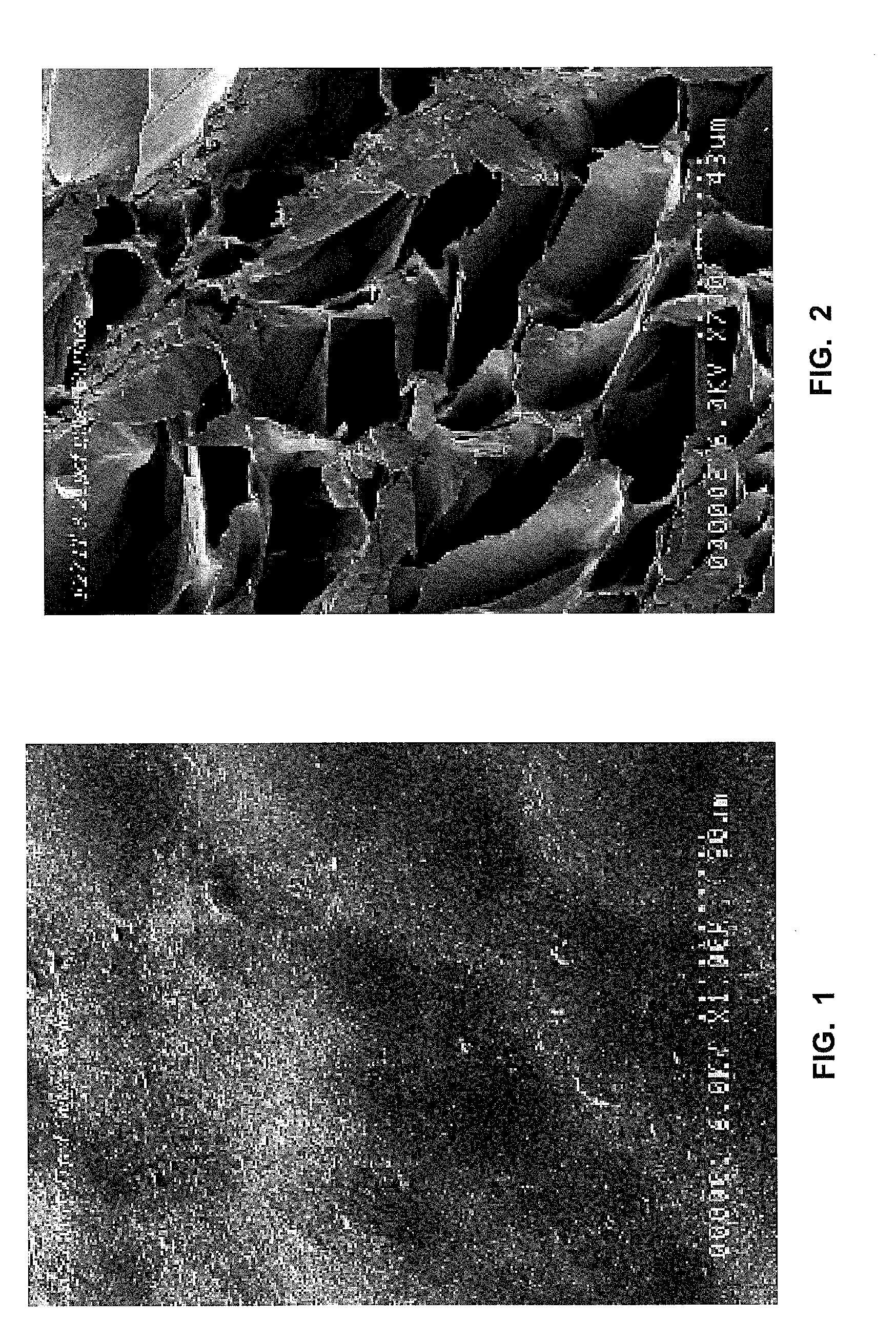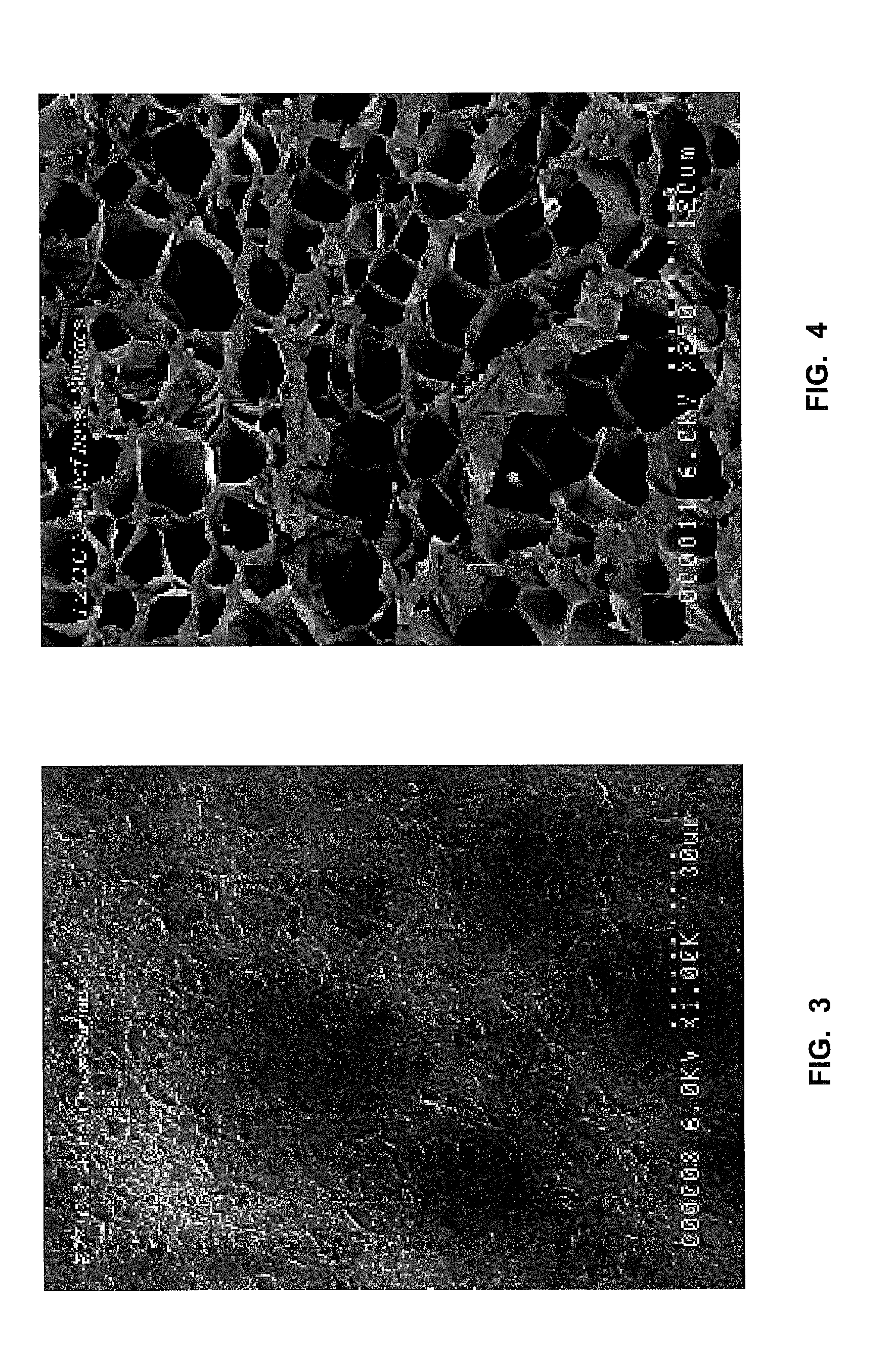Methods of minimizing concrete cracking and shrinkage
a cracking crack and shrinkage technology, applied in the field of methods of minimizing concrete cracking and shrinkage, can solve the problems of concrete concrete is a brittle material with low tensile strength and fracture toughness, so as to reduce plastic shrinkage cracking
- Summary
- Abstract
- Description
- Claims
- Application Information
AI Technical Summary
Benefits of technology
Problems solved by technology
Method used
Image
Examples
example 1
[0169]The following example demonstrates the methods according to the present invention. The ingredients were combined in 216 ft3 batches in a standard ready mix concrete mixer truck. The prepuff particles had a bulk density of 1.4 lb / ft3 available as ELEMIX™ concrete additive from Syntheon Inc., Pittsburgh, Pa. The ingredients were combined in the following order 70% of aggregates (sand and stone), 70% of water and air entraining agent (AEA), 100% of cement, 30% of aggregates, 30% of water and AEA, prepuff and WR. The ingredients were combined in the following order:
365 kg / m3cement 50 kg / m3fly ash (Class F) 895 kg / m3sand 400 kg / m3stone 165 kg / m3water 7.5 kg / m3prepuff1012 ml / 100 kgWR
[0170]The concrete batches were pumped using a Putzmeister 38Z, having a 38-Meter, 5-inch diameter line reduced to a 3-inch soft line from two truck (Sample 1 and Sample 2). The concrete was placed and screeded into a 20′×60′ form having a thickness of 6 to 8 inches using a straight edge, a 4-foot bull...
example 2
[0174]The following examples demonstrate the methods according to the present invention. The ingredients in the table below were combined in a 270 ft3 batch in a standard ready mix concrete mixer truck. The prepuff particles had a bulk density of 1.4 lb / ft3 available as ELEMIX™ concrete additive from Syntheon Inc., Pittsburgh, Pa. The ingredients were combined in the following order 70% of aggregates (sand, stone, light weight aggregate), 70% of water and air entraining agent (AEA), 100% of cement, 30% of aggregates, 30% of water and AEA, prepuff and WR. Particular ingredients were sand (Hanson aggregate PMA), coarse aggregate (Hanson aggregate PMA 57 gravel), Portland cement (Type 1, Essroc), fly ash (type C), water, prepuff and water reducer (WVR) and / or air entraining agent (AEA). The comparative traditional light weight aggregate was HAYDITE® (Buildex, Inc., Ottawa, Kans.). All ingredients are expressed as lb / yard3 except WR and AEA are expressed as oz / cwt.
[0175]The concrete bat...
PUM
| Property | Measurement | Unit |
|---|---|---|
| density | aaaaa | aaaaa |
| particle diameter | aaaaa | aaaaa |
| density | aaaaa | aaaaa |
Abstract
Description
Claims
Application Information
 Login to View More
Login to View More - R&D
- Intellectual Property
- Life Sciences
- Materials
- Tech Scout
- Unparalleled Data Quality
- Higher Quality Content
- 60% Fewer Hallucinations
Browse by: Latest US Patents, China's latest patents, Technical Efficacy Thesaurus, Application Domain, Technology Topic, Popular Technical Reports.
© 2025 PatSnap. All rights reserved.Legal|Privacy policy|Modern Slavery Act Transparency Statement|Sitemap|About US| Contact US: help@patsnap.com



